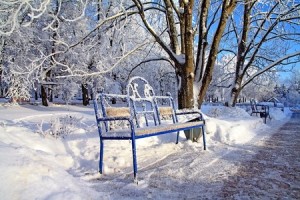Ask The Landscaping Consulting Experts: Tips To Winterize And Protect Your Investment
 Do you know how to winterize to protect your greenscape and hardscape elements, in preparation for the coming winter weather?
Do you know how to winterize to protect your greenscape and hardscape elements, in preparation for the coming winter weather?
As landscaping consulting experts in the Greater Salt Lake area and mountain west region, we often get questions about how to implement smart landscape design for businesses, in residential areas, for urban, pedestrian friendly environments and walkways, and in publics works projects tied to our civil engineering services.
There are special considerations in the mountain west, such as extreme weather changes and conservation needs, that make landscaping consulting both rewarding and challenging all at the same time.
Here at McNeil Engineering, our landscaping consulting team is passionate about using smart design to beautify surroundings, save money and valuable resources (such as water), and create healthy happy environments. And while many people invest in facilities maintenance for landscaping services, we think it’s worth covering some basics here. That way you’ll know what to look for to maintain your landscape, or how to plan a new, upcoming project.
So, without any further introduction, let’s cover the basics to consider when you are faced with winterizing your landscape.
Landscaping consulting matters before you winterize, and what to do to prepare
Greenscape:
In the mountain west, we often recommend using native plants to reduce water usage. Well selected plants, chosen wisely for their ability to thrive in the natural environment, will also better withstand harsh winters. For that reason, your first winterizing tip is to chose native plant species, when possible.
From there, you’ll also want to fertilize in the fall; cut your lawn shorter to prevent fungal infections; wrap shrubs and trees to prevent damage from snow, ice and winds; and build structures such as snow fences to provide protection. If deer are an issue, you might consider additional coverings and use of repellents. Also be sure NOT to cut frosted lawns, as you can damage your plants.
Now is also the time to consider how you’ll want to redesign in the spring to include water wise landscaping or new elements, if that’s on your list of projects.
Hardscape:
Another issue familiar to locals in the mountain west region is the coming need for snow removal and other harsh environmental concerns. We recommend that if you have hardscape elements in your landscaping design, such as art, benches, stonework, paved walkways, and other decorative elements, that now is the time to consider how they will be maintained and protected through the colder months.
For example, you might consider adding a sealant with grit on slippery stones to add traction and avoid accidents during wet, icy, and snowy winter months. Pavers are another choice to help you avoid slip and falls on slick walkways. But experts recommend that you avoid use of plastic edges, which don’t withstand cold well.
You’ll also want to think about snow removal. The team you hire will need adequate room to turn plows and avoid crashing into fixtures, lighting, and other fencing.
Hopefully, any stonework you’ve selected will have been locally sourced, as materials from the natural environment are naturally more equipped to withstand the weather cycle of the area.
You might also consider switching to low voltage lighting to uplight or downlight trees, artworks, and water features. Installation of heated walkways is also a popular choice. Now is the time to make sure you have proper drainage in place to protect both the inside and outside features of your landscape design from damage.
Still have questions? For more than three decades, the McNeil Engineering team has provided expert landscaping consulting services for the mountain west region states. Please be sure to visit us online to learn more, and give us a call if we can help!

